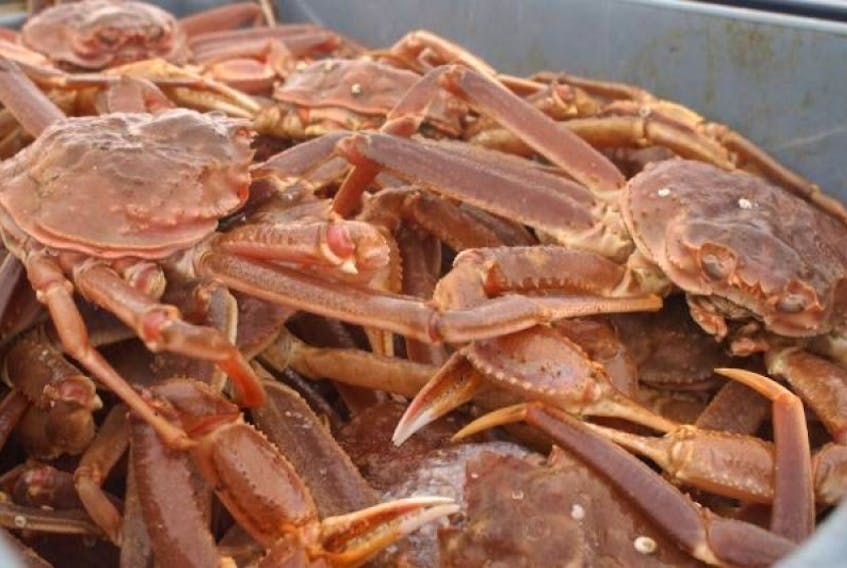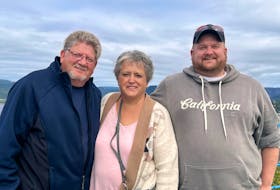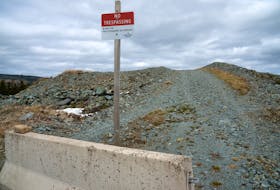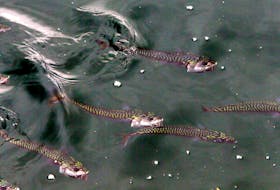Snow crab quotas for 2019 won’t be determined until next year, but a Twillingate fisherman already has concerns.
After attending a Department of Fisheries and Oceans (DFO) consultation with harvesters in Gander Nov. 21 about the proposed application of a precautionary approach for the species, Neil Stuckless feels his quota could be at risk.
According to DFO, a precautionary approach principle would establish the overall health for snow crab in Newfoundland and Labrador. The proposal has three levels of classification – critical, cautious, and, healthy.
Based on an area’s health classification, a percentage based total allowable catch (TAC) would be applied.
Stuckless fishes the 3K division – which spans from Bonavista Bay to the south coast of Labrador. There are five subsection areas – 3A, 3BC, 3D, 3B and 3C – within 3K. And depending on how a division health is classified, he said, it could bring about a decline in quotas even though one particular fishing area has a greater crab resource than others.
He fishes within 3D, from Twillingate.
“3D is the best it’s been in 20 years,” he said. “We’ve took cuts, we stopped gillnetting and dragging to get stocks back up and we’re finally seeing the benefits of that now.
“We were actually ready for an increase, but now, if this plan goes ahead, instead of getting an increase, we could actually face cuts (if 3K overall) is down.”
RELATED
Not enough large males in Newfoundland snow crab stocks: researchers
Losing voice
While DFO says it has been working on this approach for some time, it’s the first area harvesters have heard of it.
Stuckless is concerned it will leave out the opinions of those who work the sea.
“The union, DFO and fishermen sit down together and have their say about the stock and how the quota should go for the year,” he said.
Adding, catch rates, log books and onboard government observers of the fishery throughout the season are used to help make an informed decision on quotas as well.
He feels a precautionary approach could eliminate the need for harvesters input.
“It’s drawing up a new plan to manage the fishery without the input of fish harvesters,” he said. “It becomes someone in Ottawa, that doesn’t know what a crab looks like, punching in a few numbers and handing us back a quota.”
The Fish, Food and Allied Workers (FFAW) union has been hearing the same concerns.
“Harvesters are understandably angered at only being brought into the discussion at this late stage. FFAW-Unifor is calling on DFO to go back to the drawing board with consultations on these issues,” said FFAW-Unifor president Keith Sullivan in a press release.
DFO
DFO has been reluctant to speak publicly about the hypotheticals of a proposed precautionary approach for snow crab in Newfoundland and Labrador. However, to provide some clarification on its framework, Annette Rumbolt, regional manager of Resource Management, and, Derek Osborne, section head for shellfish, agreed to speak with The Central Voice.
The model is designed to provide the industry with sustainability, and would be used to establish the TAC for an area.
Along with maintaining the regular science, such as the annual stock assessment, the draft precautionary approach would also look at three metrics for examination during the study — egg clutch — the full amount of eggs in female; the catch per unit effort; and the discard – undersize crab, softshell and females.
Once the health of a stock is determined, each division will receive a classification, which would determine the exploitation range index for a surveyed area.
“We consider the precautionary approach the very first step in moving towards an ecosystem approach to fisheries management,” Osborne said.
While nothing is finalized, Rumbolt said the draft precautionary approach works with a catch rate percentage of 0-21 per cent of stock for critical zones, 22-63 per cent for cautious zones, and greater than 63 per cent for healthy zones.
“From there we would still go to the committees and ask for recommendations on what the TAC should be, but it would have to be within the percentages associated with that zone,” she said.
Osborne said having the classification system in place creates transparency, and having the established catch rates percentages manages expectations.
“There are fixed rules once you know you’re in the healthy zone, this is what the exploitation rate will be,” he said. “What also makes it different from the current approach is we have very clear indicators saying it’s healthy now, versus it’s cautious now, versus it’s critical now. There’s no guessing if a stock is healthy or if we have to worry about it.”
Osborne said there may have been some confusion about the precautionary approach using a biomass to determine the health of a stock, however, the biomass isn't the focus.
“We are hearing comments that we are trying to build it back to a certain reference point, but that’s not the case,” he said. “The precautionary approach is very specific to crab itself, how crab live and how crab function. We don’t have a target for a biomass, we have a target for health.”
The precautionary approach would be applied to all fishing areas within Newfoundland and Labrador, but it is premature to say what it would mean to next year’s fishery.
“We’ve only just begun consultations on the precautionary approach, we haven’t formally implemented it,” he said. “We do our stock assessment for crab every February. We can’t say what would actually happen until we know the state of the stock is.”
Rumbolt acknowledged there are separate areas within a fishing division, and said each area could see fluctuations with its quota.
“Each of the fishing areas could still have different increases or decreases based on their own area,” she said. “If the precautionary approach comes into place, they would still have to stay within the percentage of the (precautionary approach) zone.”
Maintaining voice
DFO has been working on the proposal since 2012, and the consultations were the first time the department has spoken with harvesters publicly about it.
Osborne said a draft was needed to do so.
“Before we went out to speak with harvesters we needed to have something to speak with them about,” he said.
Rumbolt said the input of fishermen would be needed as much as ever.
“We would definitely still need that input,” she said. “There is still room (within the zone classifications) for discussion with the committee to see what their recommendation for the TAC would be.”
Osborne added data collected from harvesters and the union would remain in place as well.
“The precautionary approach isn’t going to change the way we’ve always done stock assessments,” he said. “We still use all the same information – onshore survey, offshore survey, log books, we even have some harvesters and FFAW research scientist involved in the process. In terms of how we do the science is not really different.”
With the consultations clued up, an analysis of harvester comments will take place.
Rumbolt said there are plans in the new year to form a working group of fish harvesters to discuss the creation of harvest control rules. From that working group, she anticipates going back to the advisory board in March with a proposal for the precautionary approach for feedback.
And while fishermen have been voicing disapproval about the proposed plan, Rumbolt doesn’t see it preventing the precautionary approach from going ahead.
“The Government of Canada has signed on to creating precautionary approach for all major fisheries,” she said. “As nice as it would be to think we could probably get rid of it, I don’t foresee that being possible.
“I think we will have to collaborate to develop and find solutions to develop a precautionary approach that is suitable for everybody.”
The biggest concern being heard from fishermen is the effect it will have on their quota.
“The intent of a precautionary approach is to be sustainable,” Rumbolt said. “Even though there may be reductions, there may, we don’t know, even though there may be reductions initially hopefully it could turn around and we could be developing a larger biomass in the long run.”









